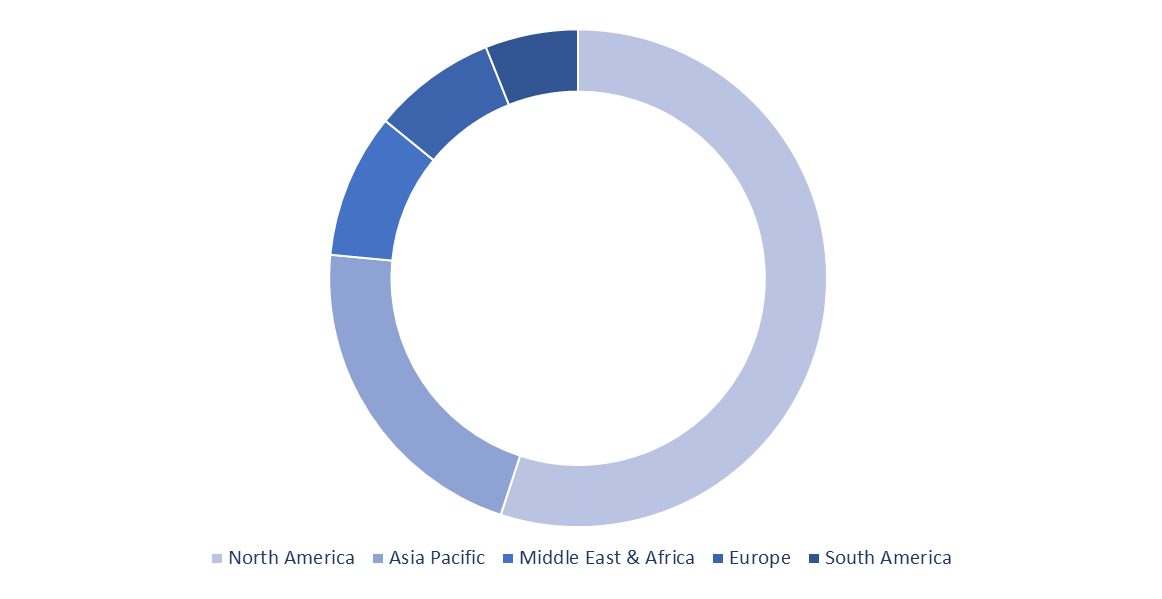The global small satellite market size was estimated to be US$ 2.75 billion in 2020 and is expected to reach US$ 21.7 billion by 2031 at a CAGR of 20.7%.
In February 2020, Surrey Satellite Technology got an agreement from the UK Space Agency, which affirmed it would contribute US$ 419.9 million every year with ESA for the execution period of its Lunar data-relay spacecraft, Lunar Pathfinder.
Likewise, the Canadian government's Industrial Technologies' office intends to give Canada-based UrtheCast US$ 13.4 million to help the continuous improvement of its X-and L-band synthetic aperture radar (SAR) design on a smallsat stage. Hence, expanded government conjectures have offered development possibilities for the small satellite market during next few years. Small satellites, including nanosatellites, microsatellites, and minisatellites, anticipate a significant part in Earth profiling and weather forecasting applications.
Small satellites are additionally known by the name of smallsats and are mostly under the weight of 180 kgs and have the size of an enormous home kitchen. These small smallsats are in addition classified into various kinds, for example, minisatellite that reaches between 100-180 kgs, microsatellite with 10-100 kgs, nanosatellite with 1-10 kgs, picosatellite that are of 0.01-1kgs, and femtosatellite with the weight of 0.001 – 0.01 kgs.
The fast spread of Coronavirus in Europe, the US and Asia Pacific has prompted a huge drop for Small Satellites worldwide, with a comparing decrease in incomes for different providers, specialist organizations across all business sectors resulting from late conveyance, producing unit’s shutdown, the restricted staff at assembling offices, and restricted accessibility of hardware.

Global Small Satellite Market Value Share Analysis, by Geography (2022)
The report titled “Global Small Satellite Market - Global Market Share, Trends, Analysis and Forecasts, 2023-2032”, wherein 2021 is historic period, 2022 is the base year, and 2023 to 2032 is forecast period. Additionally, the study takes into consideration the competitive landscape, wherein the report would provide company overview and market outlook for leading players in the Global Small Satellite Market. Furthermore, the report would reflect the key developments, global & regional sales network, business strategies, research & development activities, employee strength, and key executive, for all the major players operating in the market.
The global small satellite market is segmented based on product type, application type, end user type and region. Based on Product type, the small satellite market is segmented into nanosatellite, microsatellite, and minisatellite. Based on Application type, the small satellite market is segmented into earth observation & meteorology, communication, scientific research & exploration, surveillance & security, and mapping & navigation and other. Based on End use type, the small satellite market is segmented into civil, commercial, and defense.
Based on geography, the Global Small Satellite Market is segmented into North America, Europe, Asia Pacific, Middle East & Africa, and South America. North America is sub-segmented into the United States, Canada, and Rest of North America. Europe is sub-segmented into Germany, United Kingdom, Italy, France, Spain, and Rest of Europe. Asia Pacific is sub-segmented into China, Japan, India, Australia, and Rest of Asia Pacific. Middle East & Africa is sub-segmented into Saudi Arabia, UAE, South Africa, and Rest of Middle East & Africa. South America is sub-segmented into Brazil and Rest of South America.
The research provides in-depth analysis of prominent players holding majority share of the global market with a focus on all operating business segment and would identify the segment of the company focusing on Global Small Satellite Market. Further, market share of prominent companies in the Global Small Satellite Market would also be estimated.
The study takes into consideration the key competitive information such as business strategy, product portfolio, key development, swot analysis, and research and development focus of all the Small Satellite companies. The Global Small Satellite Market study would take into consideration the participants engaged throughout the supply chain and value chain of the market, along with their contribution. Product portfolio would focus on all the products under the Small Satellite business segment of the company. Similarly, the recent development section would focus on the latest developments of company such as strategic alliances and partnerships, merger and acquisition, new product launched and geographic expansion in the Global Small Satellite Market.
The key players of the Global Small Satellite Market are: Airbus Defense and Space, Aerospace Corporation, The Boeing Company, Thales Alenia Space, Geooptics Inc., Harris Corporation, Lockheed Martin Corporation, Millenium Space Systems Inc., Northrop Grumman Corporation, and Orbital ATK, and others.
Global Small Satellite Market Key Segments:
Based on Type
Based on Application Type
Based on End use Type
By Region
The global Small Satellite market was worth US$ 2.75 billion in 2020.
The global Small Satellite market is expected to register a CAGR of 20.7% through 2031.
The major active players are Airbus Defense and Space, Aerospace Corporation, The Boeing Company, Thales Alenia Space, Geooptics Inc.
Based on applications, the Small Satellite market is segmented into Earth observation & meteorology, Communication, Scientific research & exploration, Surveillance & security and Mapping & navigation.
Copyright © 2025 Same Page Management Consulting Pvt. Ltd. (insightSLICE) | All Rights Reserved
